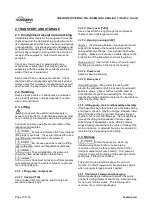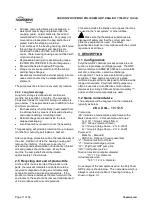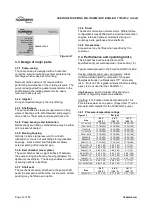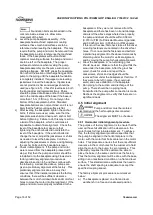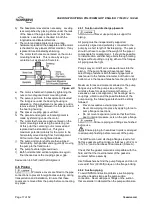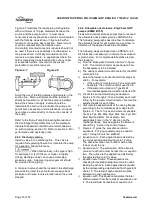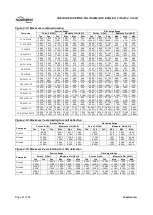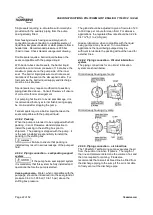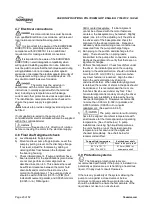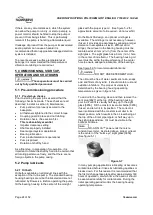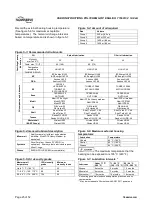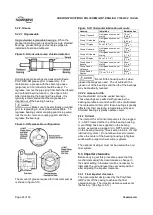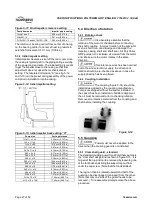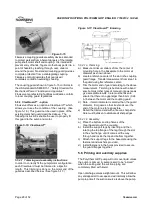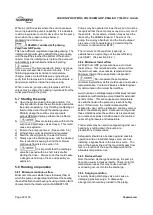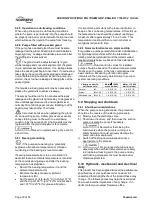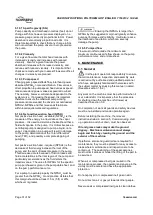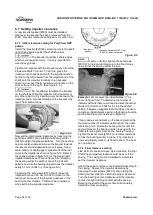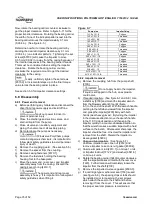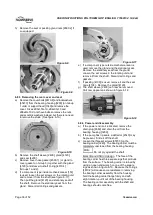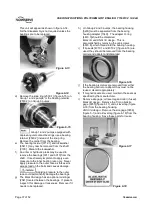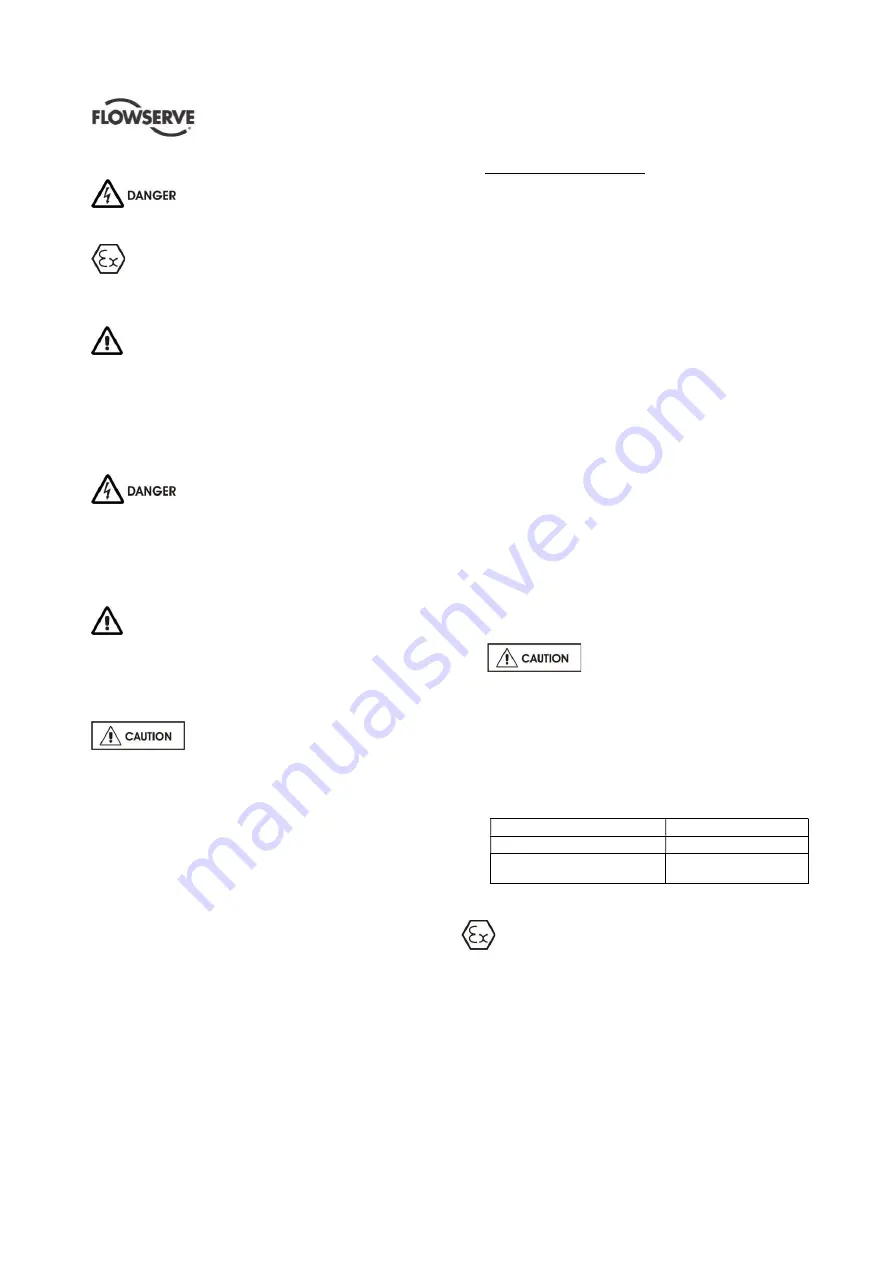
USER INSTRUCTIONS POLYCHEM GRP ENGLISH 71569132 12-04A
Page 23 of 52
flowserve.com
4.7 Electrical connections
Electrical connections must be made
by a qualified Electrician in accordance with relevant
local national and international regulations.
It is important to be aware of the EUROPEAN
DIRECTIVE on potentially explosive areas where
compliance with IEC60079-14 is an additional
requirement for making electrical connections.
It is important to be aware of the EUROPEAN
DIRECTIVE on electromagnetic compatibility when
wiring up and installing equipment on site. Attention
must be paid to ensure that the techniques used during
wiring/installation do not increase electromagnetic
emissions or decrease the electromagnetic immunity of
the equipment, wiring or any connected devices. If in
any doubt contact Flowserve for advice.
The motor must be wired up in
accordance with the motor manufacturer's
instructions (normally supplied within the terminal
box) including any temperature, earth leakage,
current and other protective devices as appropriate.
The identification nameplate should be checked to
ensure the power supply is appropriate.
A device to provide emergency stopping must
be fitted.
If not supplied pre-wired to the pump unit, the
controller/starter electrical details will also be supplied
within the controller/starter.
See section 5.4,
Direction of rotation
before connecting the motor to the electrical supply.
4.8 Final shaft alignment check
a) Level baseplate if appropriate.
b) Mount and level pump if appropriate. Level the
pump by putting a level on the discharge flange.
If not level, adjust the footpiece by adding or
deleting shims from between the footpiece and
the bearing housing.
c) Check initial alignment. If pump and driver have
been remounted or the specifications given below
are not met, perform an initial alignment as
described in section 4.5. This ensures there will
be sufficient clearance between the motor hold
down bolts and motor foot holes to move the
motor into final alignment. The pump and driver
should be within 0.38 mm (0.015 in.) FIM (Full
Indicator Movement) parallel, and 0.0025 mm/mm
(0.0025 in./in.) FIM angular.
Stilt mounted baseplates
. If initial alignment
cannot be achieved with the motor fasteners
centered, the baseplate may be twisted. Slightly
adjust (one turn of the adjusting nut) the stilts at
the driver end of the baseplate and check for
alignment to the above tolerances. Repeat as
necessary while maintaining a level condition as
measured from the pump discharge flange.
d) Run piping to the suction and discharge to the
pump. There should be no piping loads
transmitted to the pump after connection is made.
Recheck the alignment to verify that there are no
significant changes.
e) Perform final alignment. Check for soft-foot under
the driver. An indicator placed on the coupling,
reading in the vertical direction, should not indicate
more than 0.05 mm (0.002 in.) movement when
any driver fastener is loosened. Align the driver
first in the vertical direction by shimming
underneath its feet. When satisfactory alignment
is obtained the number of shims in the pack should
be minimized. It is recommended that no more
than five shims be used under any foot. Final
horizontal alignment is made by moving the driver.
Maximum pump reliability is obtained by having
near perfect alignment. Flowserve recommends
no more than 0.05 mm (0.002 in.) parallel, and
0.0005 mm/mm (0.0005 in./in.) angular
misalignment. (See section 6.8.4.7).
f)
The pump and motor will normally
have to be aligned at ambient temperature with
an allowance for thermal expansion at operating
temperature. (See chart below) In pump
installations involving high liquid temperatures,
the unit should be run at the actual operating
temperature, shut down and the alignment
checked immediately. See chart below for
recommended offset:
Pumped fluid temperature
Set the driver shaft
Up to 93 °C (200 °F)
Equal to the pump shaft
93 °C to 121 °C
(200 °F to 250 °F)
0.13 mm (0.005 in.)
below pump shaft
4.9 Protection systems
The following protection systems are
recommended particularly if the pump is installed in a
potentially explosive area or is handling a hazardous
liquid. If in any doubt consult Flowserve.
If there is any possibility of the system allowing the
pump to run against a closed valve or below
minimum continuous safe flow a protection device
should be installed to ensure the temperature of the
liquid does not rise to an unsafe level.


